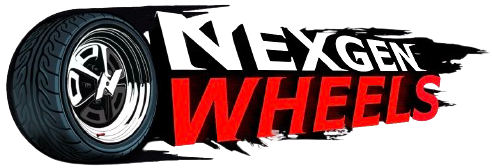What Does “Self-Driving” Really Mean in 2025?
Before we get into laws, let’s clear up the biggest misconception: Tesla’s “Full Self-Driving” (FSD) is not truly autonomous—yet.
Tesla markets its Full Self-Driving (FSD) system as capable of navigating highways, city streets, and even traffic lights. But it’s still classified as Level 2 autonomy under the SAE International standard. That means: Tesla Self-Driving Car
- The car can steer, brake, and accelerate independently.
- But the human driver must stay alert and be ready to take over at all times.
In other words, it’s like cruise control—but make it smart. It’s impressive, sure, but not “take a nap while driving” territory.
What’s Legal Right Now in the U.S.?
Tesla Self-Driving Car features operate in a legal gray area across the U.S., and laws vary by state. As of mid-2025:
What You Can Do:
- Use Tesla FSD or Autopilot on highways and some city streets in states like California, Texas, Nevada, and Florida.
- Take your hands off the wheel briefly, but you’ll be prompted to take over if you’re disengaged for too long.
- Use FSD Beta, if you’ve passed Tesla’s “Safety Score” threshold and agreed to the software’s conditions.
What You Can’t Do (Legally):
- Fully disengage from driving—like watching Netflix, texting, or sleeping.
- Operate FSD without a licensed driver present—even if your car technically can do it.
- Trust the system during bad weather or complex traffic zones.
Hot Tip: States like Arizona and Washington are testing policies to expand Level 3 and Level 4 autonomy, but Tesla isn’t certified for those yet.
Real Talk: What’s Safe to Trust Right Now?
Tesla’s self-driving software is groundbreaking, but it’s not foolproof. In 2024 alone, there were multiple investigations by the National Highway Traffic Safety Administration (NHTSA) into Tesla crashes involving Autopilot.
Here’s what’s safe to count on in 2025:
- Highway lane keeping and adaptive cruise control
- Auto lane changes (with manual confirmation)
- Navigate on Autopilot for highway exits/merging
- Traffic light and stop sign recognition (works, but keep your foot ready)
Not ready for prime time? City streets with unpredictable pedestrians, cyclists, or aggressive drivers. Your Tesla might think it knows the move—but real-world driving isn’t always predictable.
The Role of Updates, Cameras, and AI in Your Tesla
Tesla Self-Driving Cars don’t rely on LiDAR like some competitors (think Waymo or Cruise). Instead, they depend on:
- 8 cameras
- Ultrasonic sensors (phased out in newer models)
- Tesla Vision (AI-based computer vision system)
- Over-the-air updates
Think of your Tesla like an iPhone—it gets smarter with every software drop. Just this spring, FSD v12.3 introduced smoother turns and better obstacle detection.
But remember: you’re beta-testing your ride. That’s cool, but not without risk.
Tesla Self-Driving Cars and Urban Life: Are Cities Ready?
While Teslas shine on long stretches of highway, the real challenge is the urban jungle.
In cities like San Francisco, Phoenix, and Austin, Tesla drivers using FSD often deal with:
- Unpredictable human behavior (jaywalkers, bikers, Uber drivers stopping mid-lane)
- Construction zones with unclear signage
- Confusing intersections or lack of road markings
Unlike Waymo, which operates robotaxis in geofenced areas, Tesla doesn’t limit its cars to pre-mapped zones. That means you’re the backup system. And if something goes wrong? Legally, it’s still your fault.
So… Who’s Liable in a Tesla Self-Driving Crash?
It’s one of the biggest legal questions of our time.
Here’s the deal in 2025:
- You, the human driver, are still legally responsible in most crashes involving a Tesla Self-Driving Car.
- Tesla’s software license literally says you must stay attentive and in control.
- There are ongoing class-action lawsuits against Tesla, but no law yet shifts liability to the automaker.
Pro Tip: If you’re in a Tesla-related crash, mention everything about FSD use to your insurer. Not doing so can complicate claims.
Pop Culture Check: Why Everyone’s Talking About It
Tesla Self-Driving Cars have gone from nerdy niche to full-on status symbol.
- Celebs like Jay-Z and Kendall Jenner have been spotted in Model Xs and Model Ys.
- TikTok is full of “hands-off” driving demos (⚠️ often staged and illegal).
- Tesla fanboys & critics alike are keeping #FSD trending on Twitter/X every update cycle.
Tesla’s not just selling cars—it’s selling vision. Whether or not you’re onboard, you’re definitely watching.
Conclusion: Drive Smart in the Self-Driving Era
The Tesla Self-Driving Car is one of the boldest innovations of our time—but in 2025, it’s still a tool, not a replacement for the driver. While the technology keeps evolving and impressing, it comes with real legal boundaries and personal responsibilities. Staying informed about what’s actually legal and safe isn’t just smart—it’s essential, especially for younger drivers navigating this new world of mobility.
At NexgenWheels, we believe the future of driving is equal parts innovation and responsibility. Whether you’re behind the wheel of a Tesla or exploring the next wave of EVs and smart vehicles, we’re here to keep you updated, inspired, and ready for the road ahead. Because in the race toward autonomy, knowledge is your real power.


